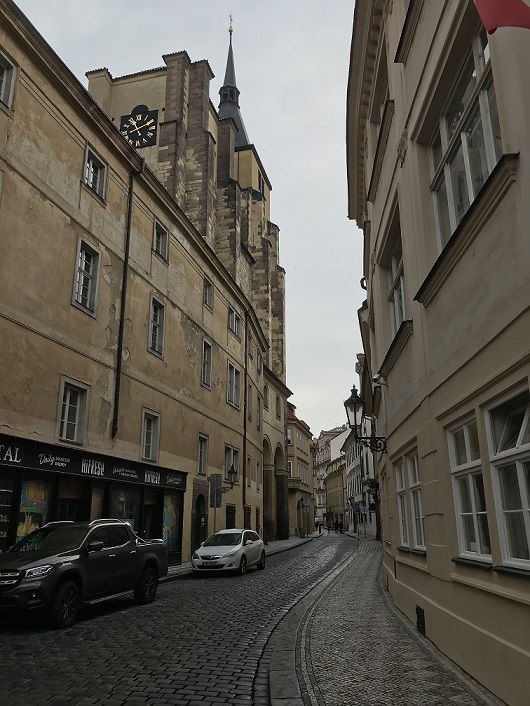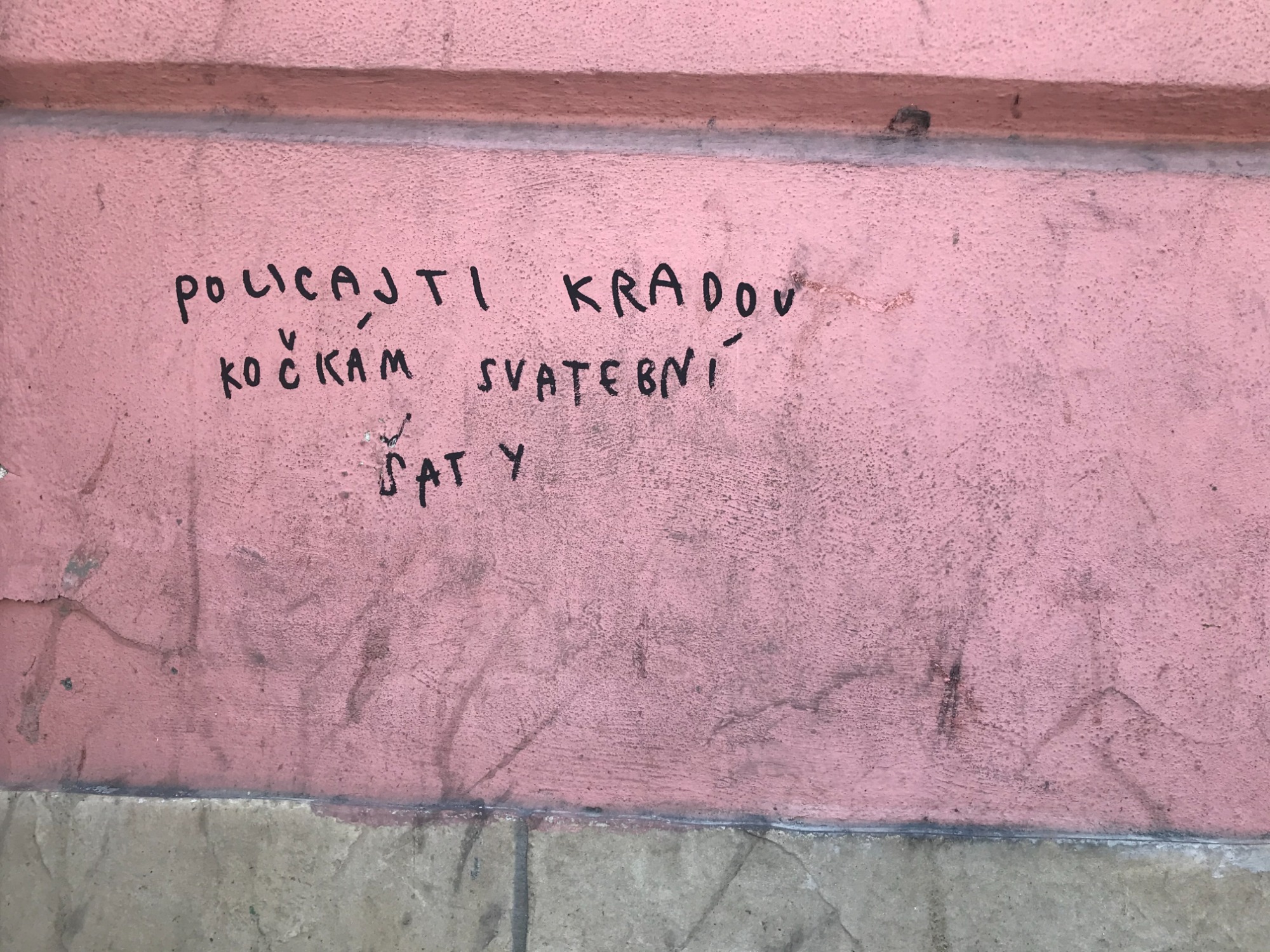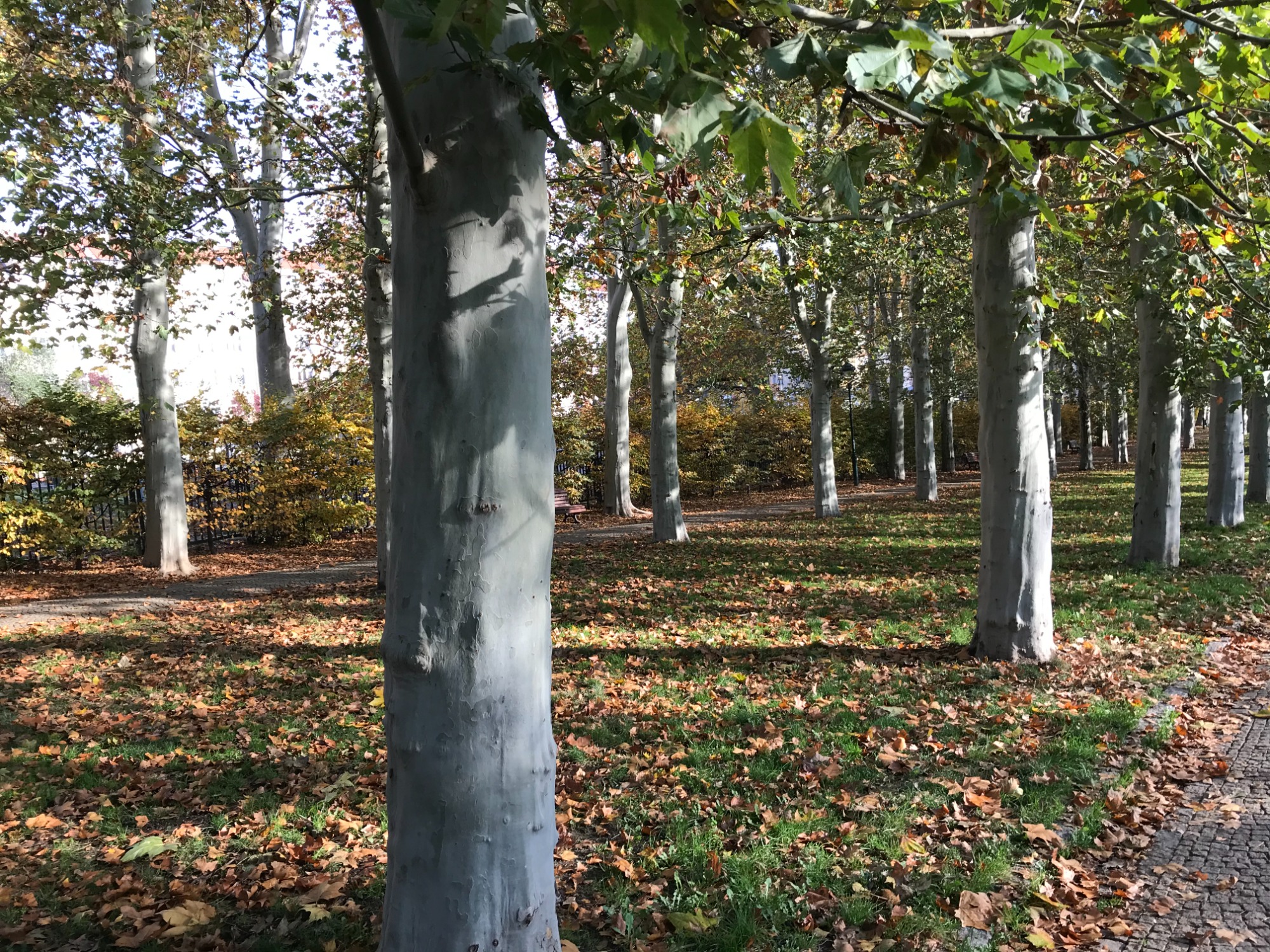In 2020, ‘distance’ became synonymous to freedom deprivation. Many governments all around the world introduced severe restrictions on people’s movement to prevent the spread of Covid-19. Depressions were not the only outcome of these regulations. On the other hand, people experienced a widening of their inner sphere, which led to self-reflection and critical evaluation of the world. The restrictions did not prevent them from feeling empathy, proving that attachment is not contradictory to distance. This paper employs this global experience to offer a present-day reading of Martin Buber‘s ‘Das Raumproblem der Bühne’ (1913), an essay initially written for the avant-garde theatre in Hellerau. Buber sees the spectator‘s dialectical feeling of both the distance and immersion in the space (Raumgefühl) as a necessary condition for the emergence of dialogue. To this end, the stage must be detached, and the audience separated from the actors. This conception differs radically from Brecht‘s anti-illusionism. The philosopher defends the ritualistic conditions of theatre space and the importance of distance and stratification of scenic relations. This paper attempts to show that the detachment can be fruitful for an intrapersonal reflection and is necessary for democratic reasoning. It employs the communication theory of Philippe Breton based on the assumption that intériorité is the condition sine qua non of democracy which qualifies democratic competence. The presented argument shows that the fusion of actors and spectators is politically indefensible. From the ontological perspective of critical realism, the author argues that ‘liminality’ echoes the structure of neoliberal ideology and should be avoided in any valid democratic endeavour. Only if the organization of space in the theatre preserves differences and therefore protects a person’s integrity does it maintain their unique social experience. From this point of view, the new experience of social distancing can be recontextualized in a progressive political way, not only in the theatre but in public spaces as well.
Jan Motal is Associate Professor at the Theatre Faculty of JAMU and the Faculty of Social Studies, Masaryk University, Brno. He also teaches at the Sts. Cyril and Methodius Faculty of Theology, Palacký University, Olomouc. His main professional interests are media ethics and the relationship between dialogue and radicality, and the theory of the theatre in relation to the public sphere. He has a background in anthropology, philosophy of dialogue and hermeneutics, critique of modernity and anarchist theory. He has published numerous articles and books on ethics, the theatre and film, such as Beauty in Film Documentary (2014) and Dialogue through Art (2016). For the latter book, he was awarded the ‘...příští vlna / next wave...’ alternative culture festival‘s publication of the year award in 2017. In the past, he also created documentary films and worked as a journalist. He is currently completing a new book titled Radical Dramaturgy, which attempts to interpret Martin Buber and Gustav Landauer’s conception of the theatre in the context of a neoliberal culture. He cooperates with several professional and activist organizations (Foundation for Independent Journalism, Association of Regional Journalists, Network for the Protection of Democracy) and is an active cultural and political commentator, often appearing in the media where he discusses contemporary issues. Jan is the head of the Centre for Media Ethics and Dialogue at the Department of Media Studies and Journalism at Masaryk University (www.cemetik.cz/en).
The city I live in has never been closer to me than when the pandemic started. The moment the tourists as well as the merchants and scammers who live off the money of them moved away from the city, on the empty streets, I felt at home for the first time. Prague.

Figure 1: “I felt at home for the first time”: Prague in Lockdown.
We were alone in the lockdown. For someone, the solitude was intimate when they could share it with family. For others, the solitude was immeasurable, spreading to every corner of their apartment. The proximity of home distanced us from it: it became annoying. We wanted to get out, to foreign cities.
In the beginning, when the pandemic was still distant, fear allowed us to treat each other more humanely. To help each other, to sew masks, to manage the stress of having our lives halted. When the pandemic became close and we got used to it, we didn’t even mind that people were still dying. A year later, we became cynical and started thinking about ourselves again.
Far away – and close. Solitude – and community.
When we were cooped up at home, sitting in front of our computer screens, longing to go to a live concert, see theatre performance, or just have a picnic in the park with friends, the world seemed distant and we longed for touch. But that’s why we were so close, because we became rare to each other. We were discovering who we were. Even from the most fleeting encounters, we benefited from the recognition of the other. Our sensitivity to others increased. Suddenly even the look in our eyes meant more.
“The genuine feeling of art, like all complete feelings, is a polar one. It transposes us into the midst of a world which we are incapable of entering.” [1]
Twentieth-century theatre thought it was discovering proximity. From the time of the avant-garde, it questioned the stage ramp and wanted to let the audience merge with the actors so that none of us would be excluded from the great ritual of participation.
In the same way that the big city has been turned into one big tourist attraction, the happening has triumphed over the theatre. In modern art, nothing sounds more unfashionable than the demand to return the distance of actor and spectator.
“The polar unity has nothing to do with the popular distinction between ‘appearance’ and ‘reality’; one can only correctly call that appearance which is not genuine art; the scenic event that is genuine art is reality, if anything is reality. We are encompassed by it; yet it is an image: we cannot enter into it.” [2]
But after the two pandemic years, we can perhaps better understand that in order to be truly close and intimate to each other, even in the theatre, there needs to be a distance between us. Only those who can be distant can find closeness. In order to be together, we must be able to be alone. To recognize the other requires to recognize the self.
“If the scenic experience is genuine and sufficient, we are aware that we cannot enter into the space of the theatre although we live in it in our experiencing. [...] The arch enemy of this knowledge is the modern stage; it strives to annihilate it or to devastate it. To annihilate it: when its ‘advanced’ technique it exerts itself to create an illusion that the space of the stage is of the same kind as ours; to devastate this knowledge when it imitates the forms that in purer times spontaneously arose out of the spirit, and that now, robbed of the life that generated and filled them, debase the theatre into a curiosity. In both ways the modern stage has succeeded in thoroughly depraving the space sense of the spectator, his sense of distance.” [3]
Far away – and close. Solitude – and communion.

Figure 2: “A neoliberal society”: Cops steal wedding dresses from cats – A wall in Prague.
The city where I live is Prague. A cosmopolitan agglomeration, a neoliberal society. Its art, tourism and lifestyle are characterised by the desire for experience, for participation, consumption. Everything changes according to where the invisible hand of the market is pointing – regardless of whether it’s an artistic or economic market. Human identity and artistic style is shaped by where fashion goes. Because we are close to the world, we are detached from ourselves.
The city that is my home is Ostrava. I was born there, most of my family comes from there. It is a peripheral, working-class town that lost its glory and importance as the mines closed and industry declined. As this city is distant from vibrant and rich Prague, it becomes incomprehensible to the cosmopolitan eyes judging the value of goods. The centre selects from the periphery only what reflects the cosmopolitan ideas: everything seems bizarre, ridiculous, life shrinks into pictures from an ethnographic museum. [4]
Figure 3: “An Ethnographic Museum”: Ostrava, Stodolní Street.
And yet this distant city is intimate to my heart. Its blood runs through my veins, along with what I have inherited, what I have learned there, where I have grown up and become a person. From afar, proximity speaks to me, in my heart, in my body.
“The centuries flee before your roaring, and you hurl the earthspace of this moment like a firebrand upon my breast. Out of your firebrand, happenings pour into my blood, shrapnel wounds and tetanus, screams and death-rattle, and the smile of the mouth above the crushed body. Where will this be bound into music, where, where, in what heritage of aeons? Where dwells its atonement, where sleeps its song, where does the secret of the master conceal itself? How can I withstand the infinity of this moment?” [5]
Far away – and close. Solitude – and community.
As Prague moved away from the world and the streets emptied, they became intimate. Suddenly they were alive with the life that had been imprinted on them for centuries. We could walk freely on the centuries-old pavement, peeping the passages and windows from where the ghosts of the past looked out at us. We were invited to establish a spiritual community of distant beings who became close to each other in their solitude. A community located at every point where we can stop and watch the imprints of time. A community that we carry within us, shaped by thousand years of history, bilions of years of evolution.
In the silent city we could finally hear its music, sung by the multitudes who lived in the city before us. The music of community.
“Behold the eyes that for centuries have longed in vain to sleep,
Barely closed, they open again with its wailing echo,
and from the depths of our days and nights, phosphorescent,
burn the notes of the highest tones!” [6]
It was our body that the pandemic has turned our attention to, as well as it distanced us from. It was our body over which we have lost control and which has suddenly become fragile and alien. It was our body shaped by the history of our culture and the eons of evolution we became more aware.
“The individual is a spark of the soul stream that we know as humanity, species, or universe. If we see the world only as the outside world, then we do see, touch, hear, taste, and smell individuals. If we turn within ourselves, however, we realize that there are no autonomous individuals. What we are, is what our ancestors are in us. They are active and alive in us, they are with us when we interact with the outside world, and they will be passed on with us to our descendants. What we are part of is an unbreakable chain that comes from the infinite and proceeds to the infinite, even if little segments might tear off and experience complications.” [7]
When our body moves away from us, it forces proximity. The world we were not allowed to enter suddenly became close to us. By extending distances to virtual infinity, in the immeasurable cyberspace our environment became closer and we became more earthly.
“The way to create a community that encompasses the entire world leads not outward, but inward. We must realize that we do not just perceive the world, but that we are the world. The one who can comprehend the flower completely, can completely comprehend the whole world. So let us return completely to ourselves, then we may truly find the universe.” [8]
Far away – and close. Solitude – and community.
But we failed to capitalise on the moment of solitude and stopping: eventually, the world did not slow down, relationships did not deepen. Now, after pandemic, we want to catch up on what we’ve missed. Once again, we have distanced ourselves from each other. From our earthly home, we have once again boarded a jet that is meant to carry us into the future.
But where are we going?

Figure 4: “We have once again boarded a jet that is meant to carry us into the future”: Planet Hollywood – Travelling by Prague tram.
“If the scenic experience is genuine and sufficient, we are aware that we cannot enter into the space of the theatre although we live in it in our experiencing.” [9]
Theatre can preserve the experience gained during the pandemic. Theatre is proximity at a distance: the actor is on stage, the spectator in the audience. Their spaces are separated by the sacred curtain of the place from which we watch and the place where things happen. And yet those who watch the stage in the solitude of darkness are not passive recipients into whom the actions of the stage are imprinted. [10]
The theatre is a place where distance meets proximity. A place of basic human tension, polarity, dialogical relationship to the other – when we recognize that others are unreachable and completely different, but at the same time we can still find our way to understand them. Theatre is a place where community is created, because we can remain who we are and at the same time unite into community through experience.
Figure 5: “We can remain who we are and at the same time unite into community through experience”: Theatre Komedie, Prague.
How big that community will be depends only on which beings we guarantee access to it. In our innermost being, in what is closest to us, the gateway to the outermost opens – the first cell that saw the light of day more than three billion years ago. The ancestors we carry within us.
“I sat once in the steel-blue solitude of the evening. Then I opened the window and you came flying in, looking like a moon-coloured bird laden with the fearful and the sweet. I felt: in this moment. The ages unfold in the unfathomable, but you laid the space, the earth space of this moment, upon my breast like a skein of wool, and I breathed the dreams of far-distant beings.” [11]
Far away the theatre seems to be today, all the closer we have it.
We only need to understand that without distance there is no dialogue, without solitude there is no community. Without past, there is no future.
“Tell me, my soul (from afar you have returned),
Whom on earth hast thou met, seen, lost?
From the depths came the music, the snow of icy stars,
The trembling of ethereal lips:
Mornings, fields, parades of flowers.” [12]

Figure 6: “The first cell that saw the light of day more than three billion years ago”: Prague park.
Photos by author.
Works cited
Březina, Otakar. Se smrtí hovoří spící… In Březina, O. Básnické spisy IV: Stavitelé chrámu. Praha: Mánes, 1929, pp. 24–29.
Buber, Martin. The Space Problem of the Stage. In Friedman, Maurice (ed.). Pointing the Way: Collected Essays. New York: Harper & Brothers, 1957, p. 67.
Buber, Martin. To the Contemporary. In Friedman, Maurice (ed.). Pointing the Way: Collected Essays. New York: Harper & Brothers, 1957, pp. 59–60.
Landauer, Gustav. Through Separation to Community. In Kuhn, Gabriel (ed.). Revolution and Other Writings: A Political Reader. Oakland: PM Press, 2010, pp. 94–108.
Maes, Marieke – Loopmans, Maarten – Kasteloot, Christian. Urban shrinkage and everyday life in post-socialist cities: Living with diversity in Hrušov, Ostrava, Czech Republic. Built Environment 38, 2012, no. 2, pp. 229–243.
Ranciére, Jacques. The Emancipated Spectator. London: Verso, 2021.
Rumpel, Petr – Slach, Ondřej. Je Ostrava „smršťujícím se městem“? Sociologický časopis 48, 2012, no. 5, pp. 859–878.
Notes
[1] Buber, Martin. The Space Problem of the Stage. In Friedman, Maurice (ed.). Pointing the Way: Collected Essays. New York: Harper & Brothers, 1957, p. 67.
[2] Ibid.
[3] Ibid., p. 68.
[4] Maes, Marieke – Loopmans, Maarten – Kasteloot, Christian. Urban shrinkage and everyday life in post-socialist cities: Living with diversity in Hrušov, Ostrava, Czech Republic. Built Environment 38, 2012, no. 2, pp. 229–243; Rumpel, Petr – Slach, Ondřej. Je Ostrava „smršťujícím se městem“? Sociologický časopis 48, 2012, no. 5, pp. 859–878.
[5] Buber, Martin. To the Contemporary. In Friedman, Maurice (ed.). Pointing the Way: Collected Essays. New York: Harper & Brothers, 1957, pp. 59–60.
[6] Březina, Otakar. Se smrtí hovoří spící… In Březina, O. Básnické spisy IV: Stavitelé chrámu. Praha: Mánes, 1929, p. 32. Translated by J. M.
[7] Landauer, Gustav. Through Separation to Community. In Kuhn, Gabriel (ed.). Revolution and Other Writings: A Political Reader. Oakland: PM Press, 2010, p. 102.
[8] Ibid., p. 98.
[9] Buber, M. The Space Problem of the Stage, p. 67.
[10] Ranciére, Jacques. The Emancipated Spectator. London: Verso, 2021.
[11] Buber, M. To the Contemporary, p. 59.
[12] Březina, Otakar. Se smrtí hovoří spící… In Březina, O. Básnické spisy IV: Stavitelé chrámu. Praha: Mánes, 1929, p. 27. Translated by J. M.